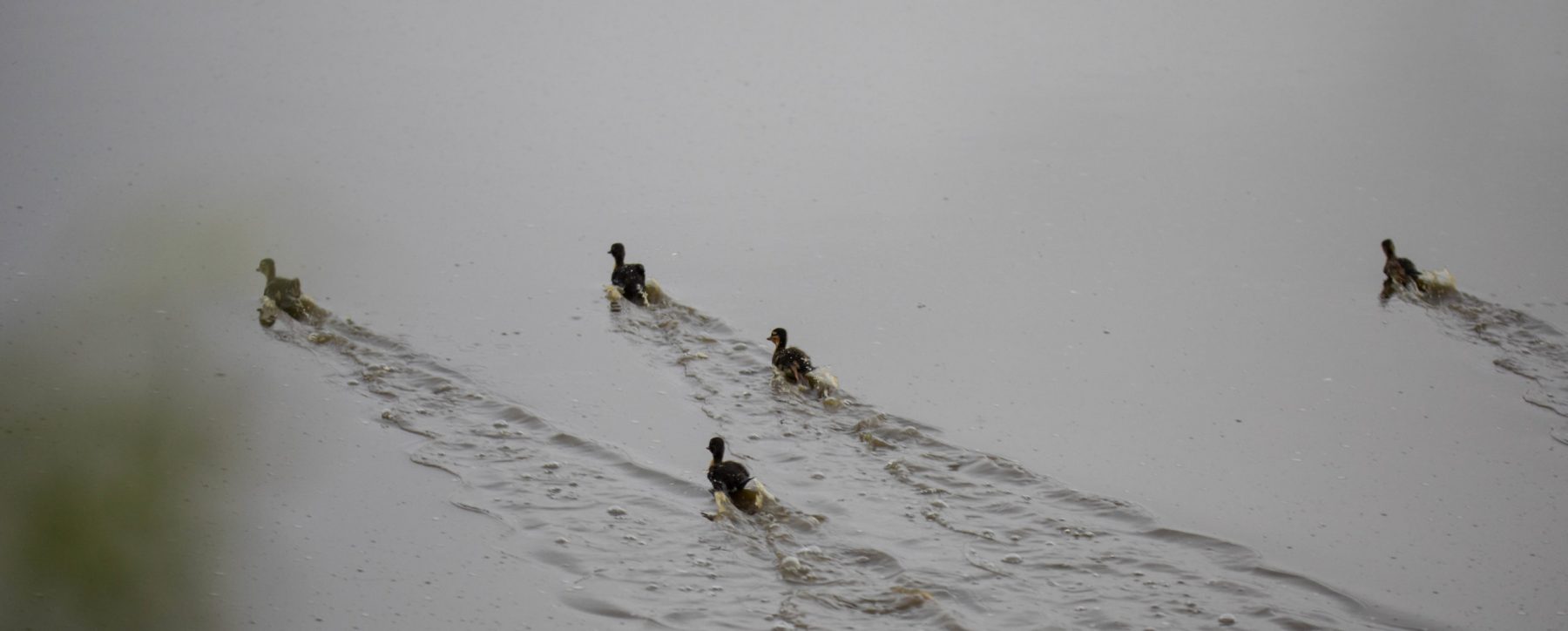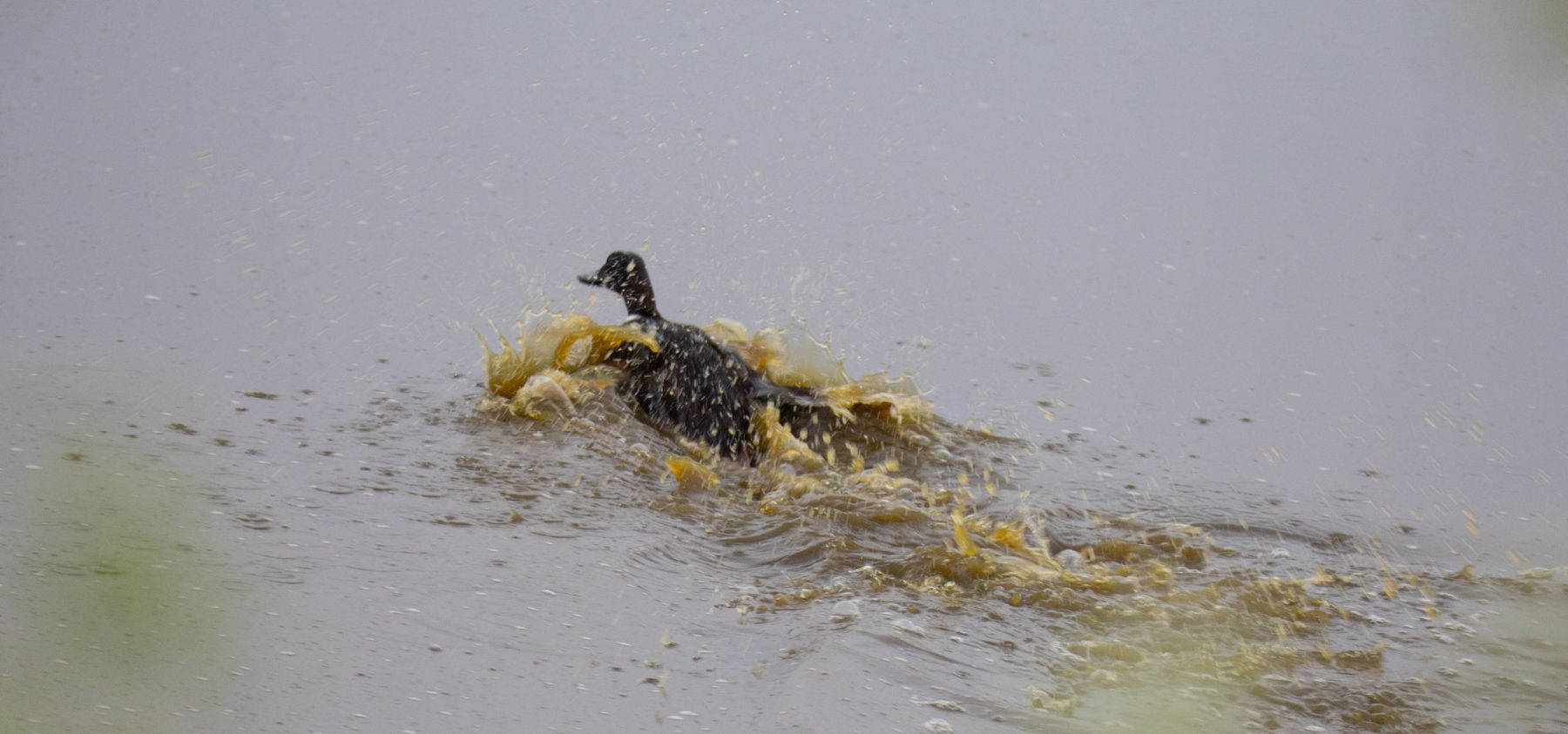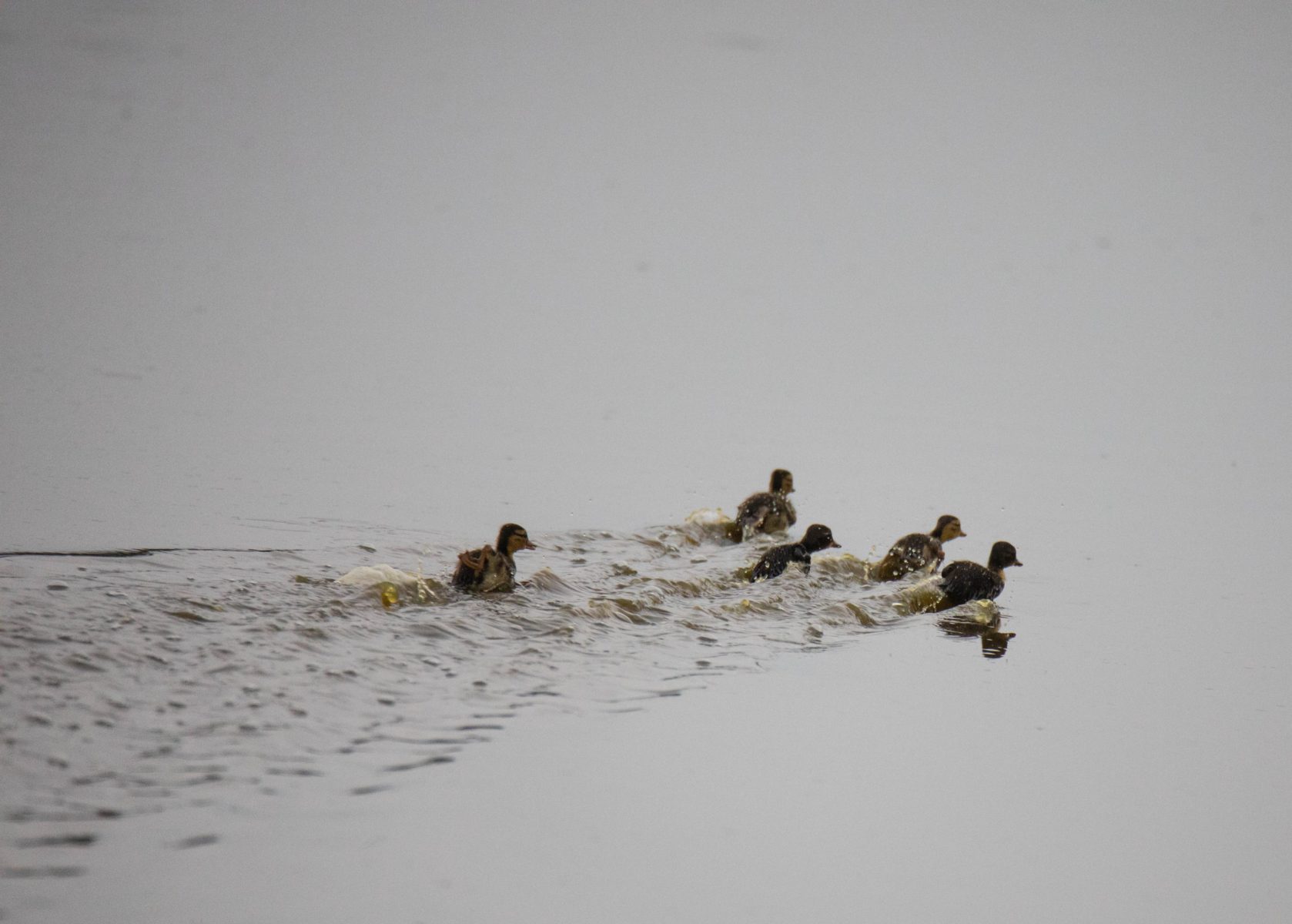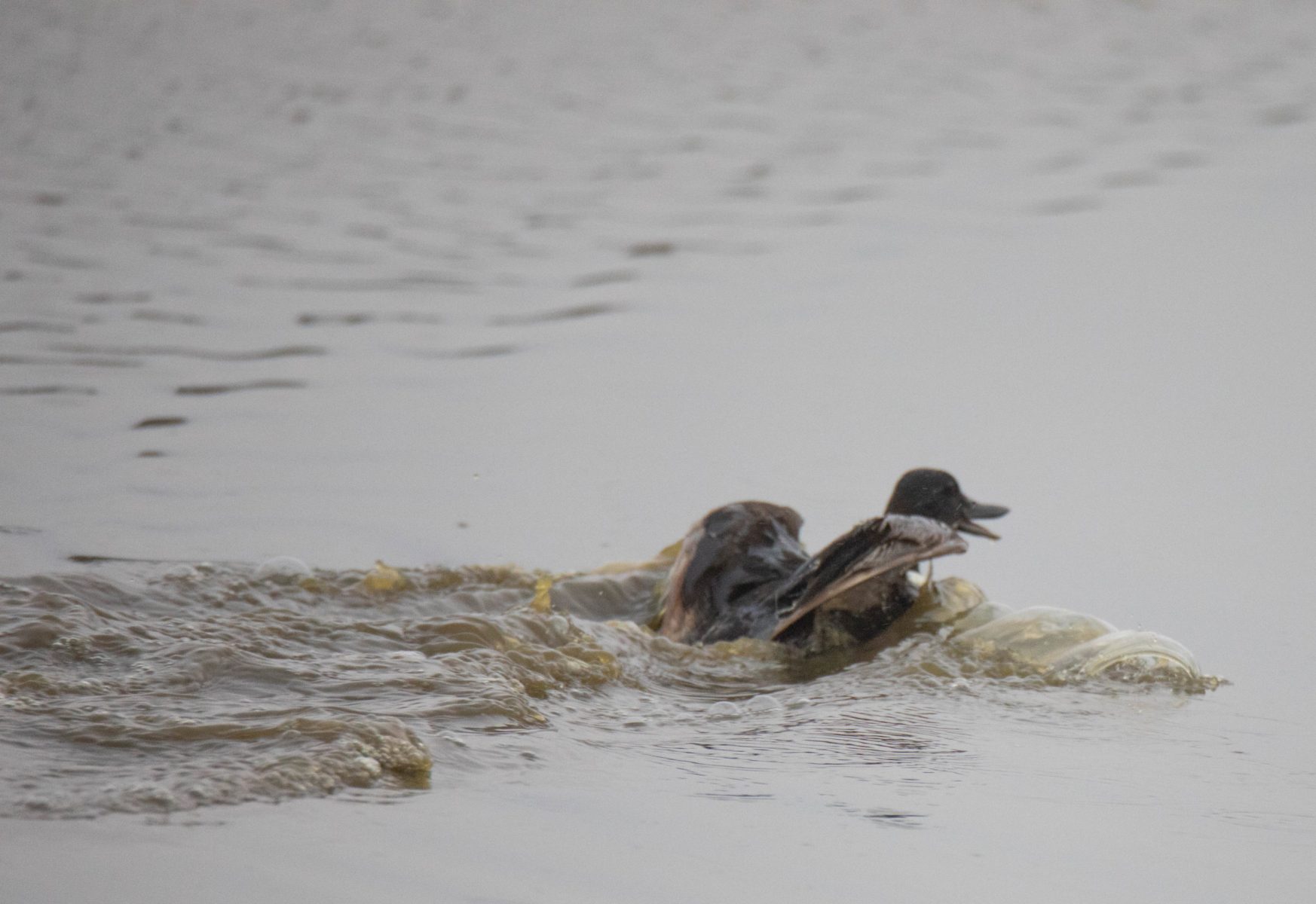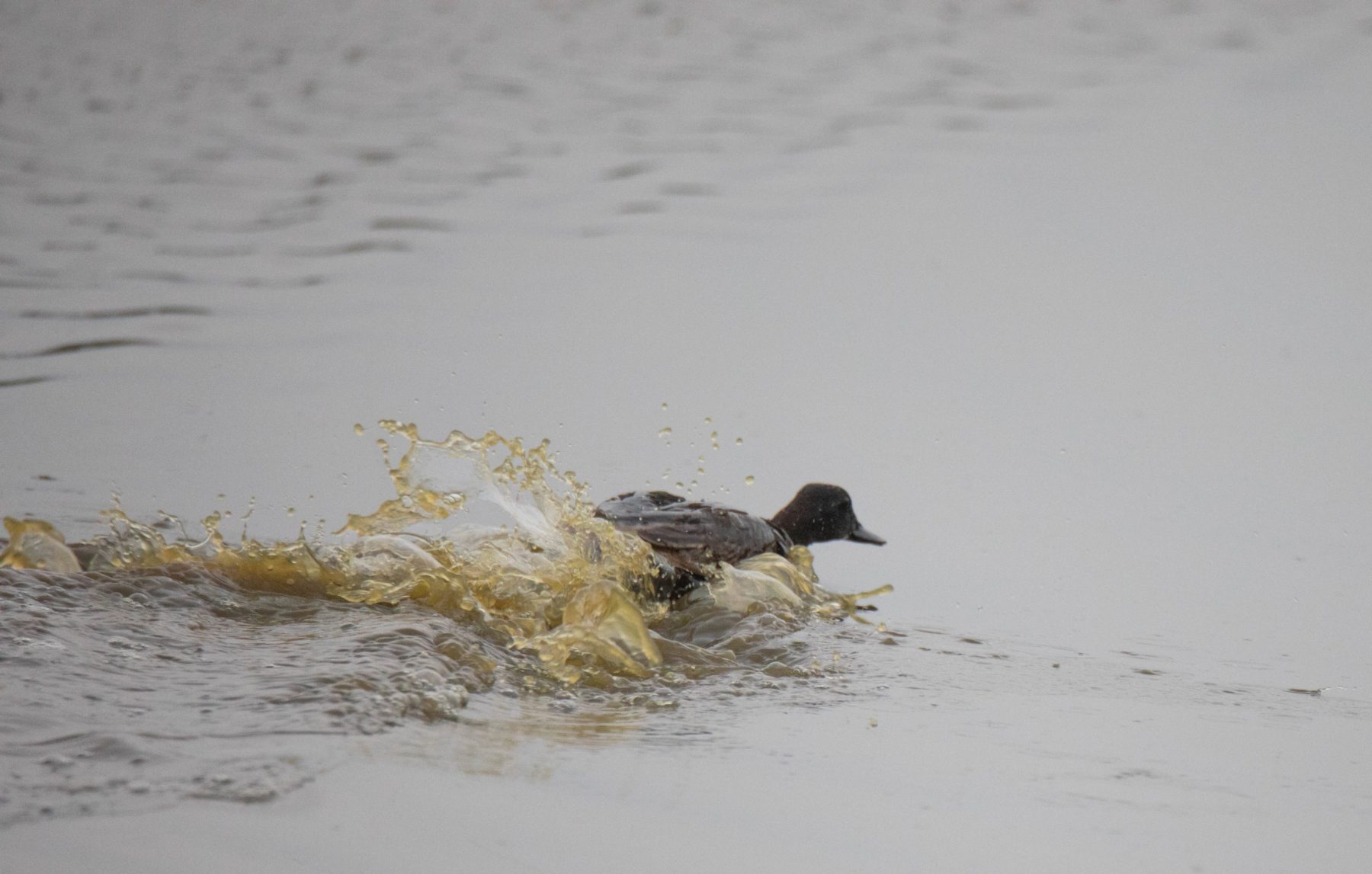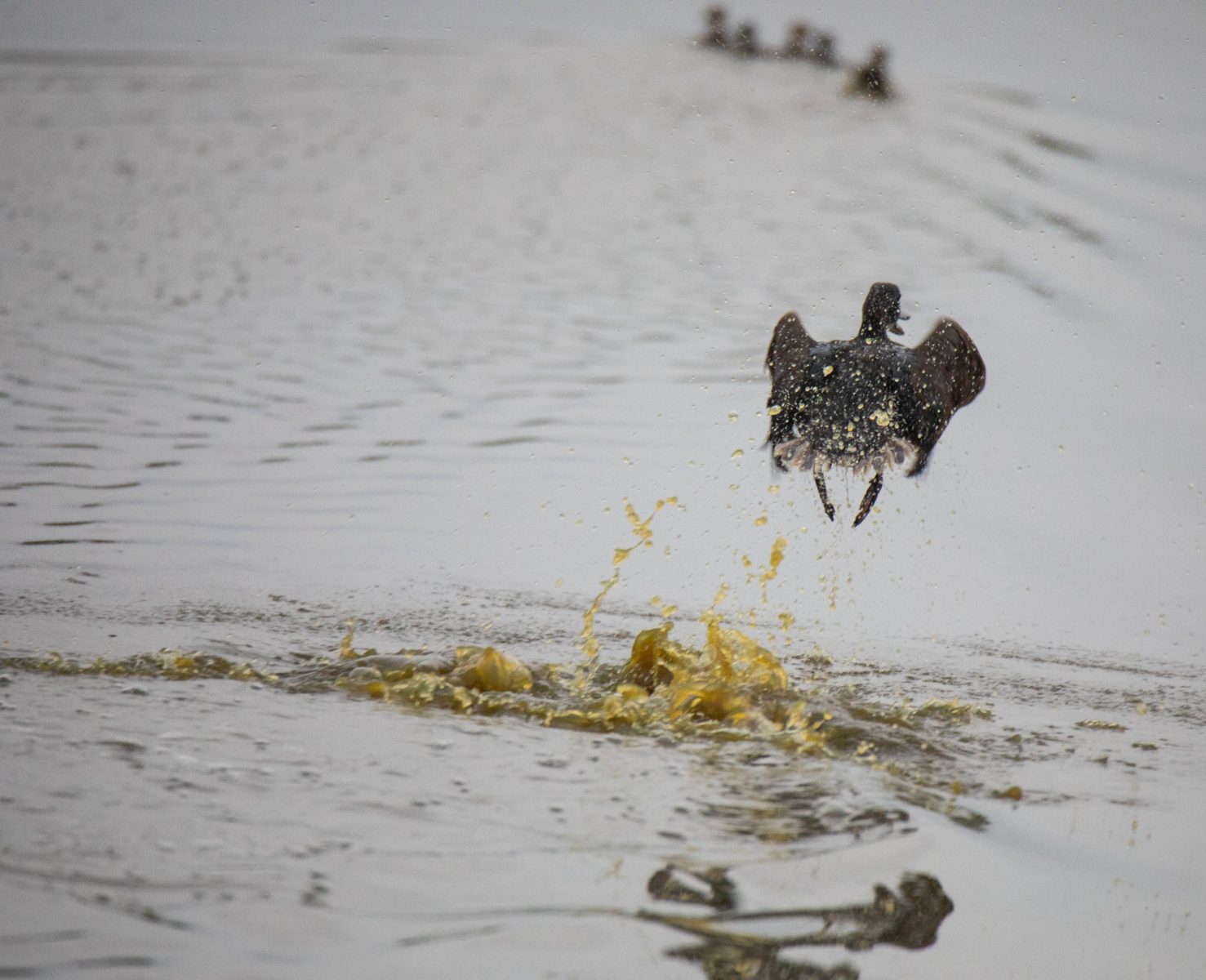Katherine and I spotted a bird we’d never identified before…
The White-faced Ibis!
But first…a Snowy Egret!
I really dig Snowy Egrets. The Great Egrets tend to be more common in the places where Katherine and I hang out, so I’m always excited to see the smaller, more feathery Snowy Egret.

And then we saw the White-faced Ibis!
Nope. Not yet.
And then we accidentally spooked a family of ducks.
The ducklings, in their panicked flight, and their mother, in her frantic attempt to round them up, churned up the yellowy-green water of what looked like a liquid manure storage pond.
We watched them until they had swam too far away to photograph…
And then we saw it–a wading bird with a long bill and long legs and beautiful green and bronze feathers. It was probing about in the muddy shore of the pond.
“This is probably a new bird for us,” I said.
“Unless it’s a juvenile or eclipse plumage or some other plumage we’ve never heard of!”
Once we downloaded the pictures, we* were able to identify it as a White-billed Ibis.
* “We” generally means the eBird Plus app. (Though, I’ve been known to overrule it when it says we saw a Fish Crow at Wilder Ranch — or anywhere outside of the southeastern states.)
I learned that Ibises belong to the same family as Spoonbills. I’ve never seen a Spoonbill so this was a new family of bird for me.
The White-faced Ibis can be found all year round in Southern California (and coastal Texas and Louisiana) according to Audubon. This one is likely migrating to its breeding grounds. It’s dressed (or, plumaged) for the occasion.
Moonglow Dairy always has plenty to show us.
In addition to the unidentified ducks (and believe, me, I tried to ID them!), the Snowy Egret and the White-faced Ibis, we saw an American Avocet, Willets, otters and seals (okay, they aren’t birds and shouldn’t count), White and Brown Pelicans, Great Egrets and about a zillion* Cormorants — many of them in the Eucalyptus trees where they nest.
*By Katherine’s count.


Nesting Cormorants tend to be a noisy bunch, but with the addition of the juveniles, it was a cacophony of…well…let’s hear from the experts. CornellLab All About Birds describes the sound of cormorants as “deep, guttural grunts that sound a bit like an oinking pig.”
Yep. Sounds about right. 🤣
Two Great Blue Herons were perched in a nest near the Cormorants. The one on the left looks like a juvenile but I’m not sure about the one hidden behind the tree trunk.
When last we visited a few weeks ago, there were many Great Egrets and Great Blue Herons nesting in the same trees with the Cormorants. On this visit, this was the only Great Βlue Nest we saw and we didn’t see any Egret nests. What a difference a few weeks can make.

Still, another amazing day at Moonglow!
